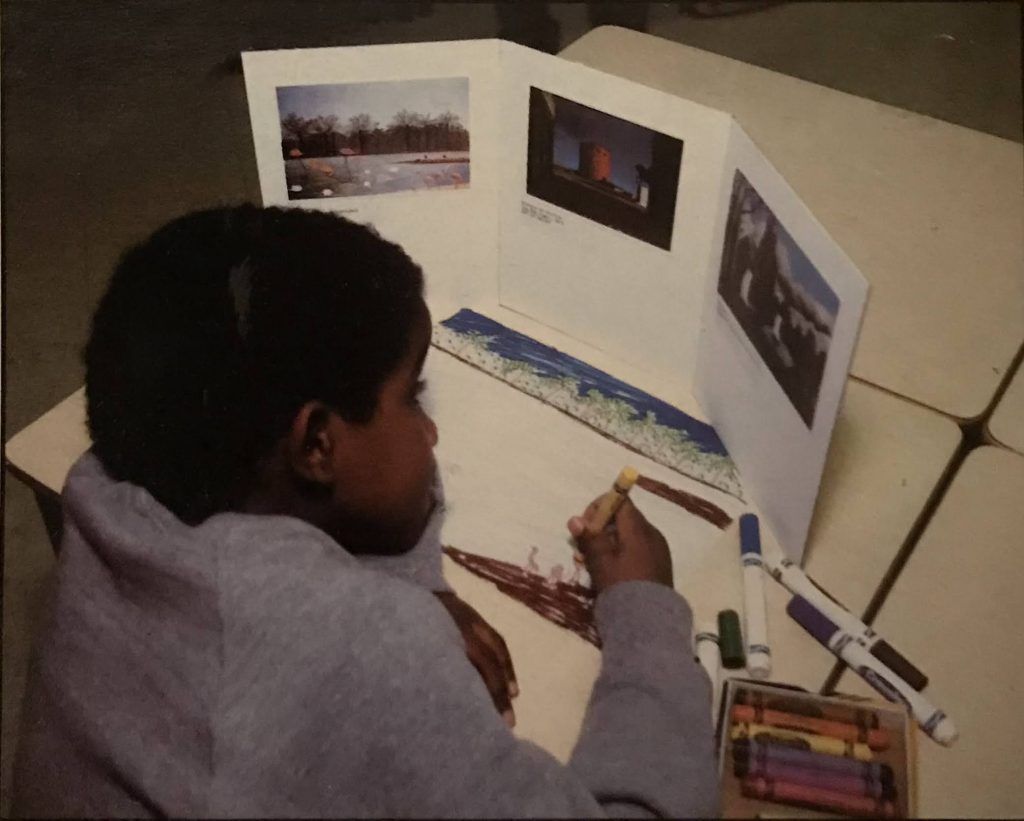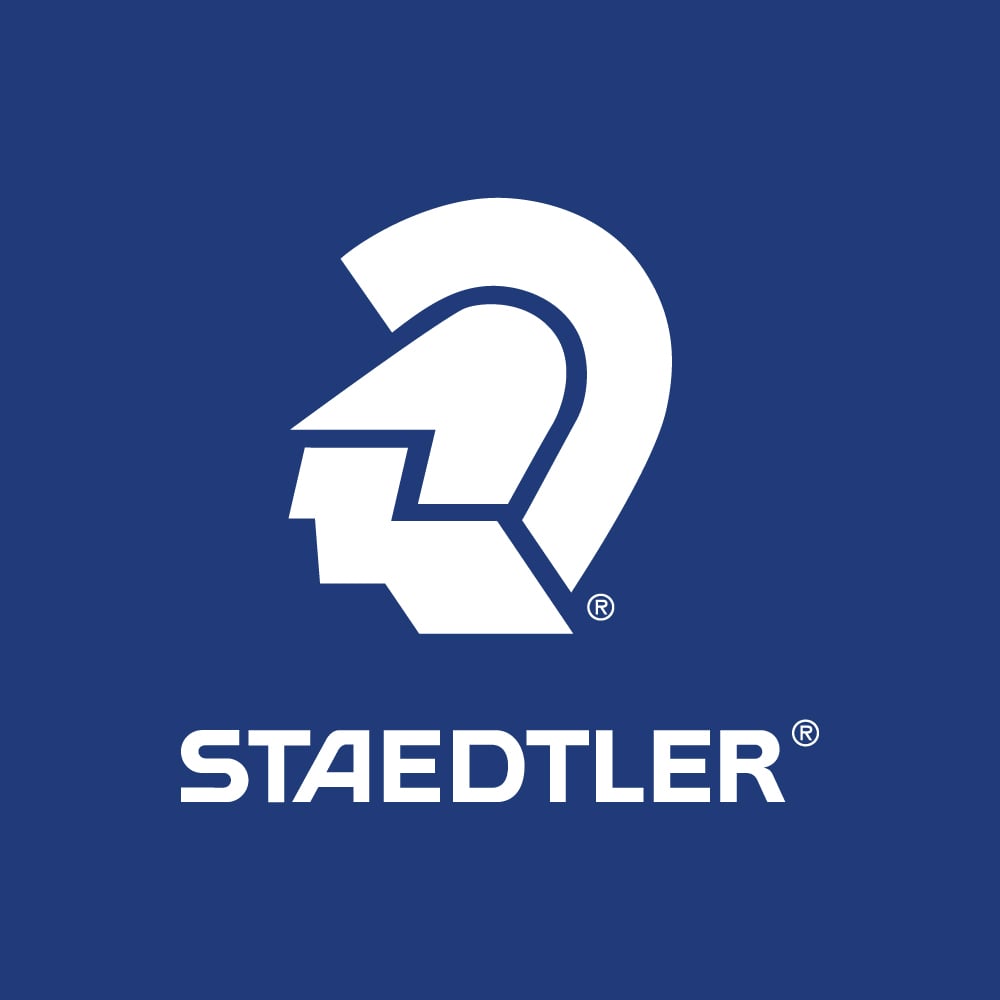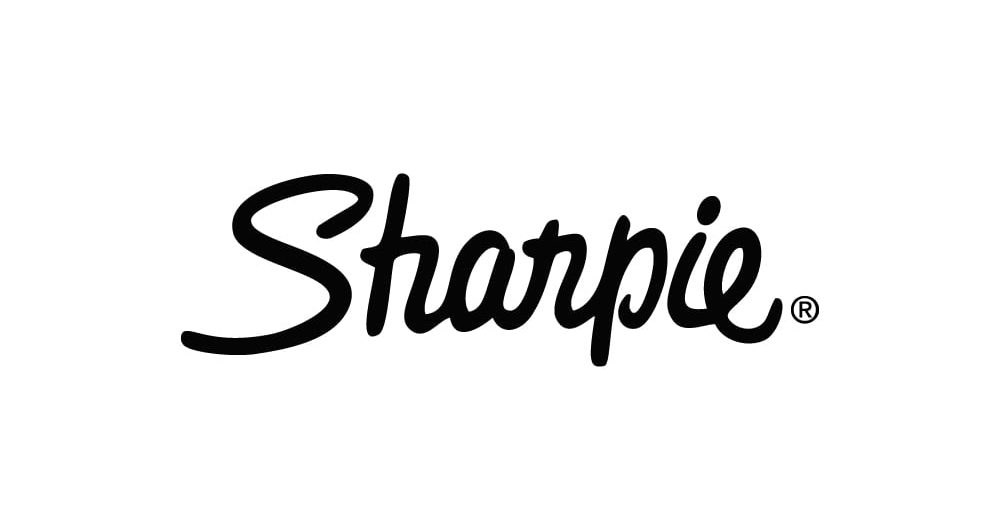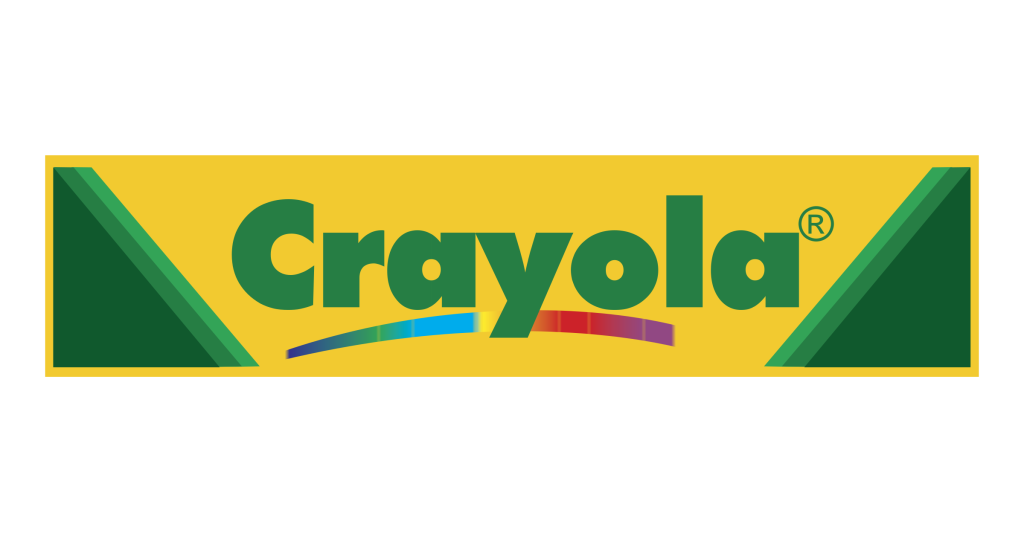
Solutions On How To Overcome Anxiety About Drawing Humans
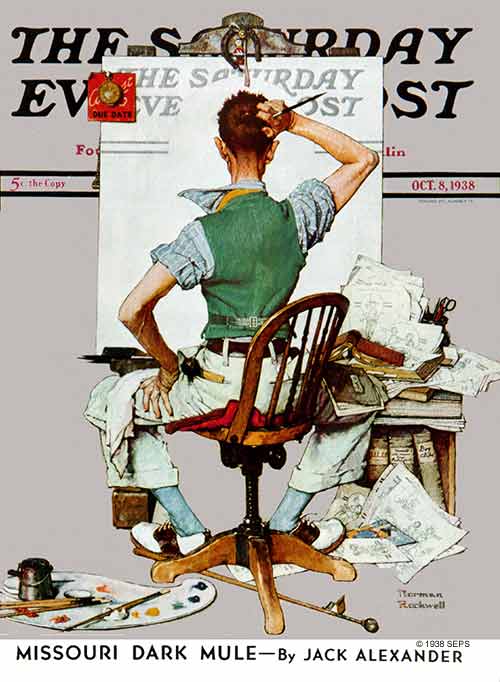
Introduction: How To Overcome Anxiety About Drawing Humans?
The Anxiety Knot
How to overcome anxiety about drawing humans is a query that burdens the minds of many artists. Ever felt that knot of anxiety tightening as you stare at a blank page, tasked with capturing the human form? You’re not alone! Drawing humans can feel like navigating a minefield of anatomical intricacies and elusive expressions. It’s a realm where perfectionism often clashes with the reality of wobbly lines and skewed proportions. Maybe you’ve experienced the frustration of countless erasures, or the deflating realization that your masterpiece-in-progress looks more like a Picasso-esque abstraction than a lifelike portrait. Never fear, we will get down to the bottom of how to overcome anxiety about drawing humans.
You’re Not Alone
You might think you’re the only one wrestling with this particular art gremlin, but, surprise, you’re in excellent company. From budding sketchers to seasoned illustrators, many artists grapple with how to overcome anxiety about drawing humans. The pressure to “get it right,” the endless comparisons to other artists’ seemingly flawless work, and the sheer complexity of human anatomy can trigger a cascade of self-doubt. It’s a shared struggle that transcends skill levels and artistic styles.
Art Fuel
But what if you could transform that anxiety into artistic fuel? What if you could approach the human form not with trepidation, but with a sense of playful exploration? The good news is, it’s entirely possible! Drawing humans can become a source of joy and self-expression, rather than a gauntlet of stress and self-criticism. With the right mindset and techniques, you can learn to embrace imperfection and discover how to overcome anxiety about drawing humans.
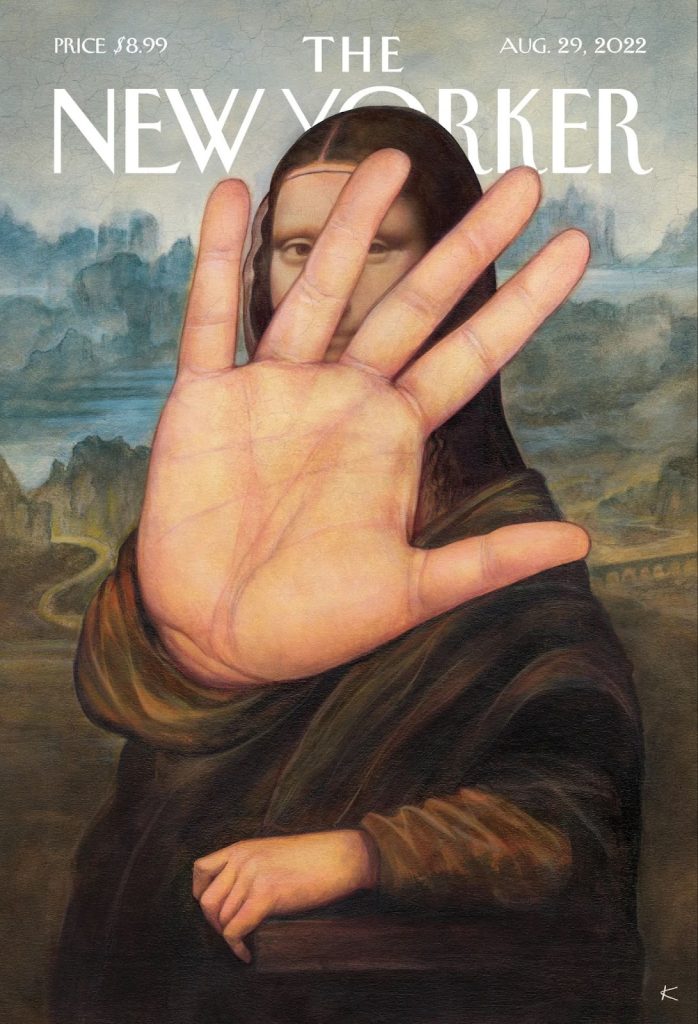
Unpacking the Roots of Art Anxiety: Why Are Humans So Hard to Draw?
So, you’re on board with the idea that you can manage your drawing anxiety, but where does this anxiety even come from? Let’s delve into the common culprits behind the stress of drawing humans. Recognizing these roots is the first step to dismantling their power over your creative process.
The Perfectionism Plague
Ah, perfectionism, the bane of many artists’ existences! This insidious mindset whispers within our conscious. We tell ourselves that every line must be flawless, every shadow perfectly rendered. For example, we don’t know where to begin with how to draw a male human body due to our perfectionism. But here’s the truth: striving for absolute perfection is a fool’s errand. It sets you up for constant disappointment and paralyzes you with the fear of making mistakes. Remember, even the old masters weren’t immune to the occasional wonky proportion or misplaced brushstroke. Give yourself permission to create without the crushing weight of impossible expectations.
The Comparison Trap: Social Media’s Double Edge
In today’s hyper-connected world, it’s impossible to escape the highlight reel of social media. We’re bombarded with a never-ending stream of “perfect” artwork, often leading to feelings of inadequacy and low self-esteem. It’s easy to fall into the comparison trap, believing that your work pales in comparison to the polished images you see online. But remember, social media is often a curated version of reality. Want to know a good way of how to overcome anxiety about drawing humans? Don’t let social media define your artistic worth or derail your creative journey.
Negative Self-Talk: Taming the Inner Critic
That nagging voice in your head telling you your art is “bad,” “ugly,” or “worthless?” That’s your inner critic, and it’s time to show it the door! Negative self-talk can be incredibly damaging to your confidence and motivation. Challenge those negative thoughts with positive affirmations and remind yourself of your progress. Treat yourself with the same kindness and encouragement you would offer a fellow artist.
Past Criticism: Ghosts of Art Class Past
Remember that harsh critique from your high school art teacher? Or that dismissive comment from a family member? Past criticism can linger, casting a long shadow over your present-day artistic endeavors. It’s time to reframe those experiences. Recognize that everyone has different tastes and opinions, and that one person’s criticism doesn’t define your worth as an artist.
Skill Doubts: Imposter Syndrome Strikes
Ever feel like you’re faking it, that you don’t really have the skills or knowledge to create “good” art? That’s imposter syndrome, and it’s a common affliction among artists. Combat skill doubts by focusing on continuous learning and self-improvement. Take classes, watch tutorials, and practice regularly to build your skills and confidence. Truthfully, conquering your self-defeating thoughts is essential for how to overcome anxiety about drawing humans. Celebrate your progress, no matter how small, and remember that every artist starts somewhere.
Process Anxiety: Are You Doing it Wrong?
Do you find yourself constantly second-guessing your techniques? Worrying that you’re not following the “right” process? With so much conflicting advice and information available, it’s easy to develop process anxiety. The key is to stop searching for the one “authentic” method. Experiment with different approaches, find what works best for you, and trust your artistic instincts. There’s no single “right” way to create art.

How I Overcame My Anxiety About Drawing Humans
As a 5-year-old, one of my first subjects to draw were people. As far as I can remember, humans were one of the subjects I just naturally gravitated to. Even though my first drawings of people were very simple, it was a start, nevertheless. My confidence and will power helped me on my path of how to overcome anxiety about drawing humans. Decades later, I feel as confident in myself as the subject above my painting of Chancellor Ammons. I’m also confident enough to publish this website blog dedicated to teaching others how to draw people. With that said, you can also excel if it’s in your heart to portray humans as an artist. You’ve just got to get into the right frame of mind and understanding of yourself as an artist.
Letting Your Artistic Expression Flow
As I drew humans in my own space and time freely, it allowed for repetition, consistency and self-expression. As you’ll discover in this article, the voices of the outside world can be a major source of your anxiety about drawing humans. Instead, get into a zone and just be consistent in drawing people the way YOU want to. That’s how I began to draw humans and got better at it as a kid. These were the days before social media. Back then, I was just a child at home cranking out art. Similarly, discover that child-like charm within you to create without restriction and from the soul. Art should allow us to enter a positive frame of mind in how we discover our inner power, confidence and identity.
Patience, Individuality & Confidence In Drawing Humans
My early drawings were like many children who are artistically inclined. I began drawing simple human figures using my imagination, then started to draw from observation. For fun, I drew the comic characters that attracted me from books, TV and video games. Later on, I graduated from drawing comics to creating realistic portraits of people in high school. My teen years are when I really learned how to draw faces. From my personal experience, I recommend drawing what attracts you most about humans. Your genuine interest in subject matter is one of the foundations to your improvement as an artist. In addition, that interest supported by your confidence and individuality is your artistic backbone. Therefore, stand up for what you believe in and let the art flow from within you!
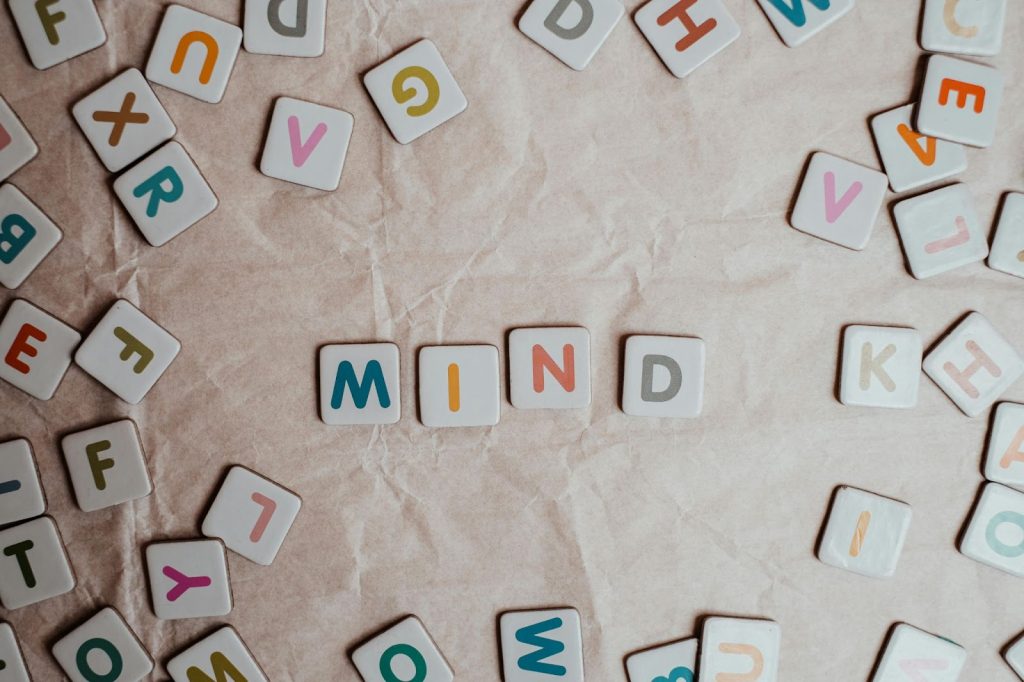
Rewiring Your Brain: Turn Negative Thoughts into Art Fuel
Okay, we’ve identified the villains behind your art anxiety. Now, it’s time to understand how to reprogram your mental circuitry and transform those negative thought patterns into sources of creative power. It’s about recognizing that your brain, in its misguided attempts to protect you, can actually become your biggest obstacle. Rest assured, if you can control your mind you will succeed in learning how to overcome anxiety about drawing humans.
The Backfiring Brain
Think of your brain as an overprotective bodyguard. It wants to shield you from criticism, failure, and the dreaded feeling of inadequacy. But sometimes, this protective instinct goes haywire. It starts throwing up roadblocks and creating anxieties that prevent you from even attempting to draw. As you learn how to overcome anxiety about drawing humans, monitor your thoughts and actions closer. As a result, you will gain more of an understanding about how to optimize your artistic mind.
The “What If” Whirlwind
Let’s face it, artists are masters of the “what if” game.
- What if I have no talent?
- What if this drawing turns out terrible?
- What if people laugh at my art?
These “what if” questions can swirl around in your mind like a relentless storm, fueling your anxiety and paralyzing your creativity.
Thoughts Aren’t Facts
Here’s the crucial truth bomb: these thoughts aren’t facts. They’re merely possibilities conjured up by your imagination. Just because you think you might fail doesn’t mean you will fail. Just because you imagine someone criticizing your art doesn’t mean they will. These anxieties are often phantoms, not prophecies. You can safely release them and reclaim your mental space for more productive and positive thoughts.
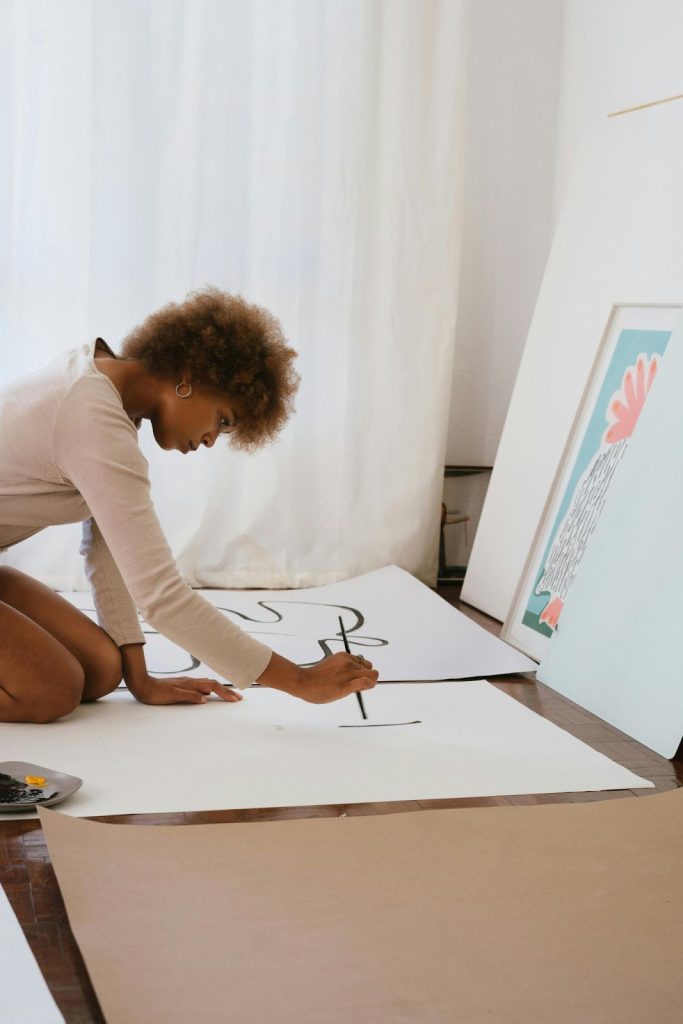
Creating Your Safe Space: Setting the Stage for Stress-Free Sketching
Now that we’ve challenged those pesky negative thoughts, let’s talk about creating an environment where your creativity can truly flourish. Think of it as building a fortress of artistic freedom, a sanctuary where you feel safe, supported, and inspired to create without fear.
The Power of Privacy: Your Judgment-Free Zone
Imagine trying to dance freely in a crowded room, under the glare of critical eyes. Uncomfortable, right? The same principle applies to drawing. Creating a private, judgment-free zone is essential for overcoming art anxiety.
- Find a physical space where you can draw without interruption or scrutiny . It could be a quiet corner of your home , a local library, or even a secluded spot in nature.
- The key is to choose a place where you feel relaxed and at ease . This allows you to focus on the process of creating without worrying about external opinions.
- It’s also important to remember that you don’t have to share everything you create. Your sketchbook can be a private space for experimentation and self-discovery. You may find yourself wondering about how to overcome anxiety about drawing humans? Give yourself the space to draw without the pressure of outside eyes.
Your Art Squad: Finding a Supportive Community
While privacy is crucial, so is connection. Surrounding yourself with a supportive community of fellow artists can make a world of difference in your confidence and motivation.
- Share your work with trusted friends or family members who offer encouragement and constructive feedback.
- Join an art class or online forum where you can connect with other artists.
- The goal is to find people who understand the challenges of the creative process and can offer support and inspiration.
- Beware of the ‘Art Critic’ within your circle, whose “support” involves highlighting flaws. Seek encouragement from people you respect.
Social Media Detox: Limiting Comparison to Protect Your Mental Space
We’ve already discussed how social media can fuel comparison and anxiety. Taking a social media detox can be a powerful way to protect your mental space and reclaim your artistic confidence.
- Limit your time on social media platforms that trigger feelings of inadequacy.
- Unfollow accounts that make you feel bad about your art.
- Instead, focus on curating a feed that inspires and uplifts you.
- Remember that your artistic journey is unique and that comparing yourself to others is a surefire way to stifle your creativity .
- Social media engagement isn’t a definitive measure of artistic ability.

Goal Setting That Works: Small Steps, Big Confidence
Alright, now that you have your creative sanctuary established, it’s time to set some goals that will propel you forward without triggering that nasty anxiety. Think of it as laying a brick road to success, one manageable step at a time. After all, consistent progress, no matter how small, breeds confidence.
Baby Steps: Choosing Subjects That Match Your Current Skill Level
Trying to tackle a masterpiece when you’re just starting out is like trying to run a marathon without training. It’s a recipe for frustration and self-doubt. Instead, choose subjects that align with your current skill level.
- Opt for smaller subjects or details from larger scenes.
- Start with simple techniques that don’t require years of training.
- Select a niche (such as portraits, landscapes, or still life) to limit the range of drawing challenges. You might be thinking about how to overcome anxiety about drawing humans? Try starting with a focus on a less daunting subject matter.
- The goal is to set yourself up for early wins, which will boost your confidence and make you more likely to stick with it.
- If you decide to go for a walk in the mountains, do not start with a climb on Everest, but with something simpler.
- If you are novice or out of practice, do not start a photorealistic portrait project with oil paintings on canvas.
Project Breakdown: Dividing Big Tasks Into Manageable Chunks
Large art projects can feel overwhelming, leading to procrastination and anxiety. Break down those big tasks into smaller, more manageable chunks.
- Serialize the project, focusing on one chapter or section at a time.
- Identify the most important parts of the project, treating the rest as optional.
- Roll it back, cutting out all the parts you added to your original idea.
- Set small, easily achievable time limits for each part of your creative process.
- Remember, every small step forward is still progress, and each completed chunk will build your momentum and confidence.
Timeboxing: Using Time Limits To Avoid Overwhelm
Setting time limits for your art sessions can help you avoid getting bogged down in perfectionism and anxiety.
- Allocate a specific amount of time to work on a drawing, whether it’s minutes or an hour.
- When the time is up, stop working, regardless of whether you’re “finished”.
- This technique encourages you to focus on the process rather than the outcome, and it prevents you from overworking a piece.
- It also teaches you to let go of control and embrace imperfection, which is crucial for overcoming art anxiety.
- Timeboxing forces you to make decisions and move forward, even when you’re feeling unsure, which ultimately builds your confidence and resilience.
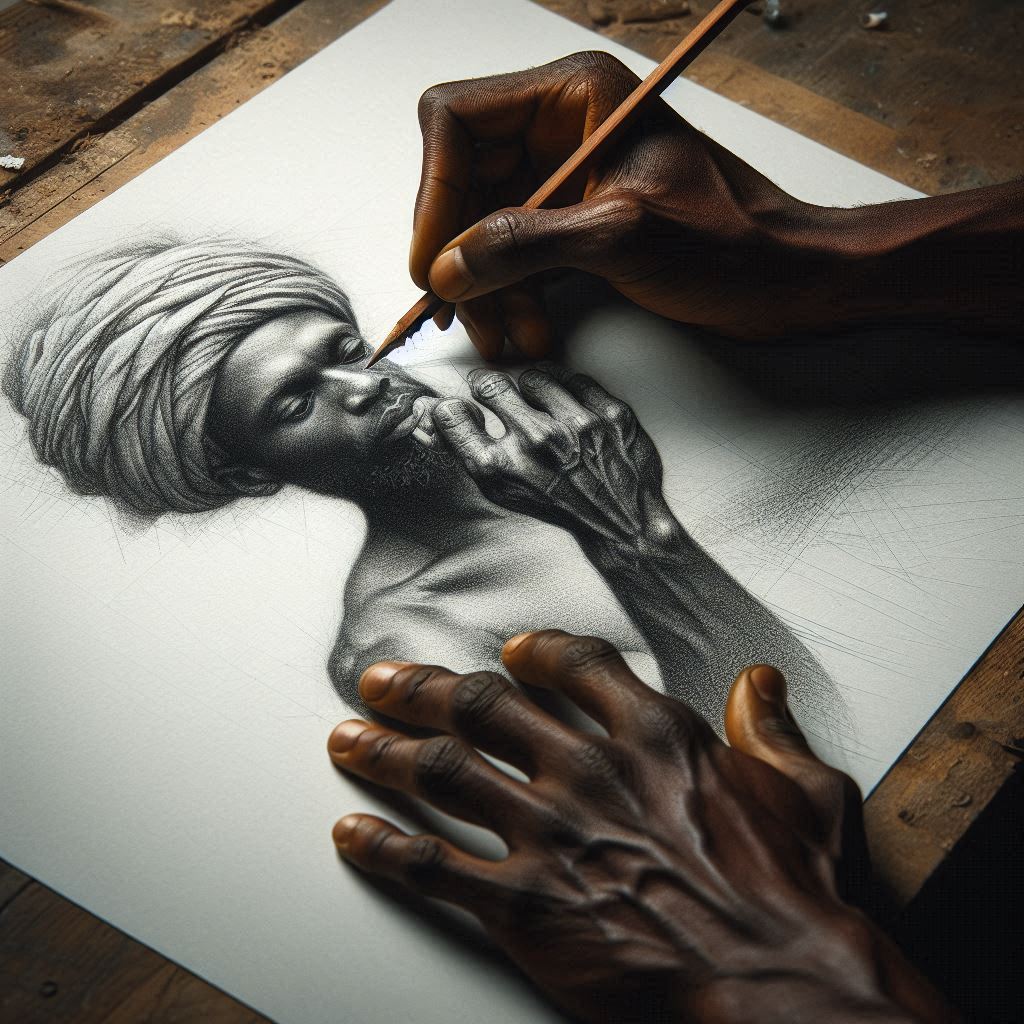
The Joy of the Process: Why It’s Not All About the Final Picture
Now that we’ve got some achievable goals in place, let’s pivot to embracing the journey, the messy middle, the pure, unadulterated joy of creating, regardless of the outcome. Prepare yourself to relinquish your vice grip on perfection and dive headfirst into the liberation of the artistic process.
Embrace the “Disasterpiece”: Why Every Drawing Doesn’t Have to Be Perfect
Let’s face it: not every creation will be a stroke of pure genius. Some days, you might just end up with what I affectionately call a “disasterpiece”. But fear not, because these artistic mishaps are actually valuable learning opportunities. Recognize the beauty in imperfection, understanding it as a testament to growth rather than a mark of failure.
- Acknowledge that “off” days happen.
- Analyze mistakes to understand areas for improvement.
- Remember that even professional artists produce work they dislike.
- Don’t let the fear of a less-than-perfect outcome prevent you from starting or continuing a project.
- Shift your focus from the final product to the knowledge and experience gained during the process.
- As Drawism.com puts it: “Some days we make great art or masterpieces, and some days we make ‘disasterpieces’”.
Creative Dumps: Loosening Up With No-Pressure Art
Sometimes, the best way to banish art anxiety is to simply let loose and create without any expectations whatsoever. Think of it as a “creative dump”—a no-pressure zone where you can experiment, make mistakes, and generally make a mess without judgment.
- Engage in a minimum of five minutes of artistic activity without caring about the end result.
- Use inexpensive or low-value materials to further reduce the pressure.
- Try drawing directly with ink, skipping the pencil and eraser altogether.
- Just move your hand over the paper, drawing lines or shapes without thinking too much.
- As Stephen Travers Art notes, drawing directly in ink “forces us to find a confidence which is very liberating”.
Playtime: Experimenting to Rediscover the Fun in Art
When art starts to feel like a chore, it’s time to inject some playfulness back into the process. Remember when you first started creating art, and it was all about exploration and enjoyment? Let’s tap back into that childlike wonder.
- Try new techniques, materials, or styles without worrying about the outcome.
- Set aside time for unstructured creative exploration, free from any specific goals or expectations.
- Create things you enjoy, as it will help you feel more energized and motivated.
- Focus on the feeling of immersion and engagement, rather than the final product.
- As Drawism Art suggests, making things that you enjoy helps you to become more confident.
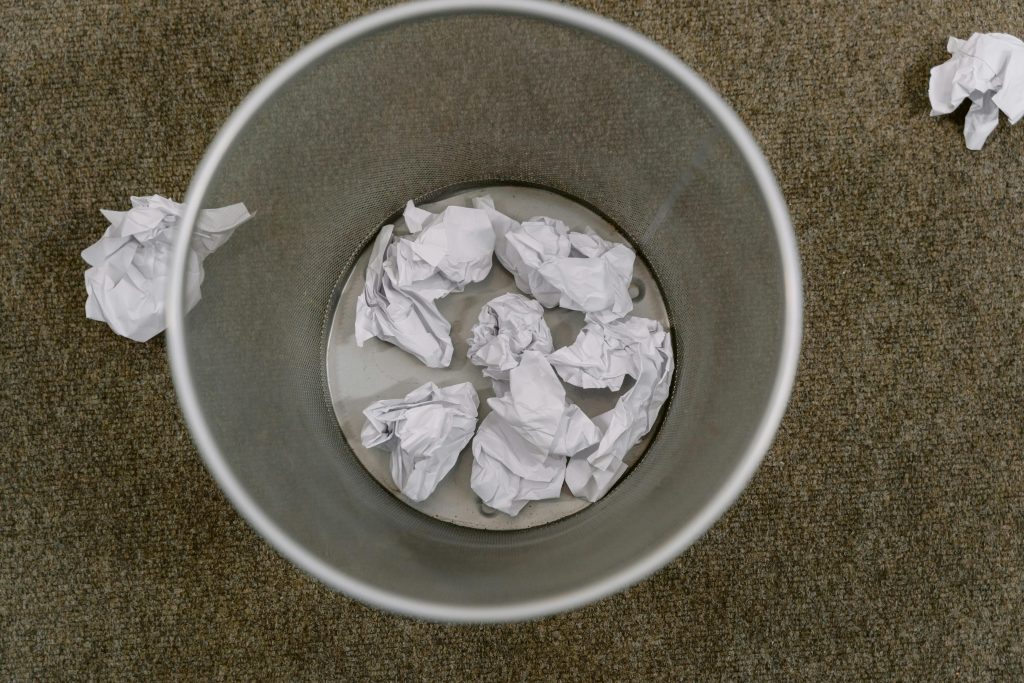
Turning Mistakes into Masterpieces: Lessons from “Failed” Art
With a renewed sense of playfulness fueling our creative engines, let’s confront what many artists dread: mistakes. Rather than viewing them as roadblocks, consider them breadcrumbs on the path to artistic enlightenment.
Failure as a Stepping Stone: Seeing Mistakes as Learning Opportunities
Mistakes are not only inevitable but essential to the artistic process. Each perceived failure offers a chance to learn, adapt, and refine your skills. Therefore, do not be afraid to continue your art from fear of failure.
- Acknowledge that failing is part of learning.
- View errors as valuable data that can inform future decisions.
- Embrace a growth mindset, believing that your abilities can be developed through dedication and hard work.
- Focus on what you can learn from each mistake, rather than dwelling on the negative outcome.
- Remember, reaching a proficient or professional level of art requires years of time, practice, and dedication, and won’t happen overnight.
Spotting Weaknesses: Pinpointing Areas for Growth
Deliberate self-reflection helps to transform mistakes into actionable insights. It allows you to pinpoint specific areas where you need to improve. This honest assessment is invaluable for targeted practice and growth.
- Identify your weaknesses and work to overcome them.
- Consider what didn’t turn out the way you wanted it to.
- Determine if it was the anatomy, the rendering of the form, the color, the light, or the proportion.
- Take some time to treat yourself and give yourself a pat on the back for stepping out of your comfort zone to become a better version of yourself.
- As Drawism.com notes, acknowledging what isn’t going the way you want in your creative endeavors will ultimately save you valuable time and get you closer to a path that will lead you to success.
Consistent Practice: The Secret Ingredient to Improvement
Consistent practice is the bedrock of artistic growth. The more you create, the more opportunities you have to learn from mistakes, refine your skills, and develop your unique artistic voice.
- Spend more time on your creative projects.
- Keep practicing, maintain a positive mindset, and be mindful and conscious of your areas of improvement.
- Remember that you will get better the more time you spend on your projects.
- The more time you spend on your projects, the faster you’ll improve and reach your creative goals and overcome art anxiety.
- The key is to not give up and continue, because reaching a proficient or professional level of art requires years of time, practice, and dedication, and won’t happen overnight.
Channeling Chuck Jones: Drawing Out Those “Bad” Drawings to Get Them Out of Your System
Animation legend Chuck Jones had a unique perspective on artistic development: “Every artist has thousands of bad drawings in them and the only way to get rid of them is to draw them out”.
- Embrace the idea that you need to produce a certain number of “bad” drawings to clear the path for better work.
- Focus on quantity over quality, especially when learning a new skill.
- Accept that the initial drawings may not be great, but they are a necessary step in the learning process.
- With a little creativity you can even turn temporary setbacks into fuel for your motivation.
- Don’t be afraid of not being able to think of an idea; just draw what you think is nothing. It is then that your real ideas develop.
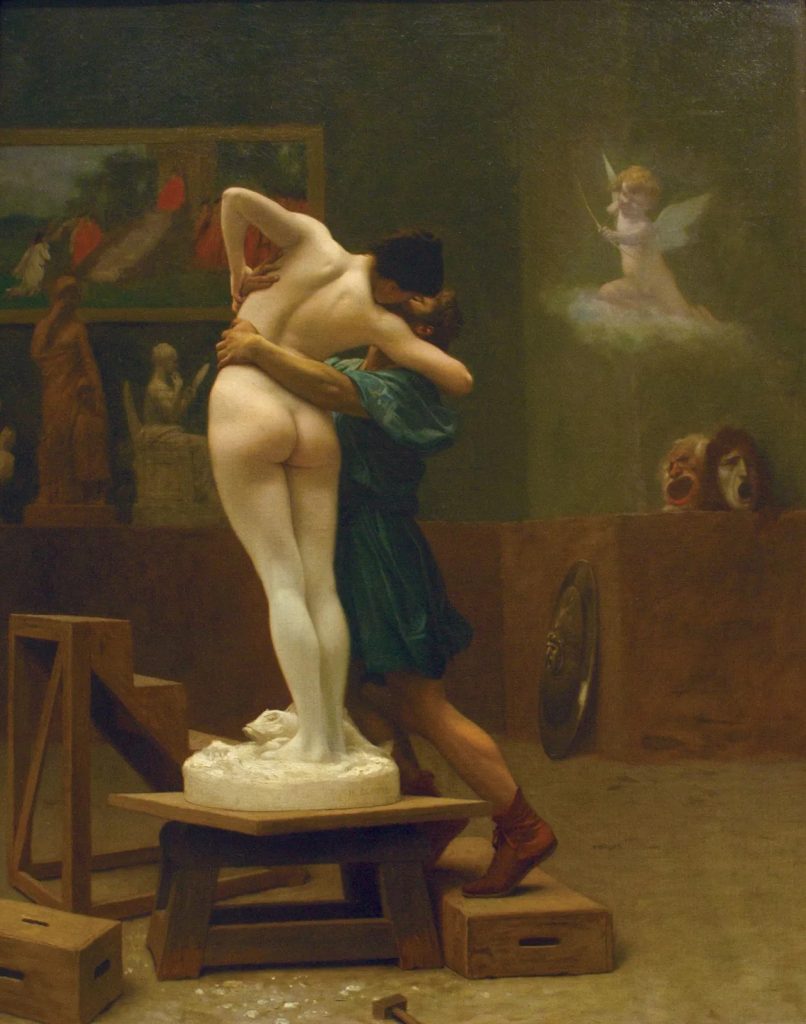
Choosing the Right Tools and Subjects: Setting Yourself Up for Success
Having embraced the inevitability of mistakes and committed to consistent practice, let’s now fine-tune our approach by carefully selecting the right tools and subjects. This strategic alignment can significantly reduce anxiety and pave the way for a more enjoyable and productive artistic journey. Find a way to fall in love with the aspects of how you create art. For instance, Jean-Léon Gérôme’s painting “Pygmalion and Galatea” (circa 1890) depicts a deep love of the art process. As you can see above, Gérôme depicts the artist in a loving embrace with his unfinished subject.
Draw What You Love: Selecting Subjects That Spark Joy
Passion is a powerful motivator. When you genuinely enjoy what you’re drawing, the process becomes less of a chore and more of a joyful exploration. This intrinsic motivation can help you overcome creative blocks and persevere through challenges. From my passion for drawing people, I discovered how to overcome anxiety about drawing humans at an early age.
- Choose subjects that particularly interest you and capture your attention.
- Select subjects that give you the most enjoyment.
- There’s no point in drawing if it’s not going to be an enjoyable experience.
- Having a fun tool to work on lessens the anxiety of drawing.
- As Stephen Travers Art suggests, if you enjoy the subject, you’ll persevere more, which will help your drawing development.
Finding Your Niche: Concentrating Your Focus to Build Expertise
Mastering a wide range of subjects can be daunting. By focusing on a specific niche, you can narrow your scope and deepen your understanding of a particular area. This focused approach allows you to build expertise more quickly and experience a greater sense of accomplishment.
- Stay within a subject niche, whether it’s portraiture, landscapes, or something else entirely.
- Concentrate and improve on the particular challenges of your niche. You might want to learn how to draw human eyes, how to draw a masculine body etc.
- Experience more quickly the feeling of “I remember when I couldn’t draw that, but now I can”.
- Choose a subject that’s not too ambitious for your skill level, experience level, and general confidence.
- As Stephen Travers Art notes, staying in a niche means you have a more limited set of drawing challenges to work on, which can speed up your improvement and self-confidence.
Budget-Friendly Art: Using Affordable Materials to Ditch the Pressure
Expensive art supplies can create unnecessary pressure. The fear of “wasting” valuable materials can stifle experimentation and hinder the creative process. Opt for budget-friendly alternatives which will liberate you to take risks and explore new ideas without hesitation.
- Choose low-value materials, such as an inexpensive sketchbook, to reduce anxiety.
- Use whatever you’ve got at home—a pen or pencil and computer paper work just fine.
- All you need is one pencil and any paper that will hold graphite.
- Consider a small black ink pen with a somewhat coarse tip; the thick stroke prevents one from being particularly accurate or detailed, forcing the drawing to be a little rough, but no less pleasant.
- Using cheaper materials can remove the anxiety that rises when one considers ruining an expensive new notebook.
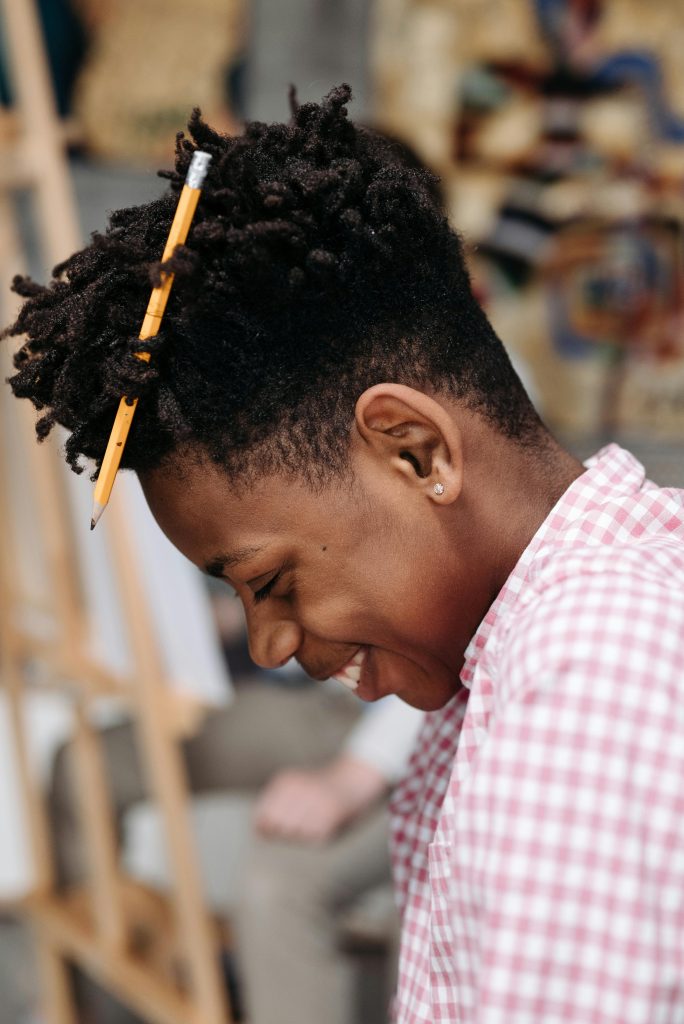
Quick Techniques to Calm Drawing Anxiety
With a curated selection of tools and subjects now at our disposal, it’s time to delve into quick and effective techniques for quelling drawing anxiety in the moment. These strategies can help you regain focus, quiet your inner critic, and unlock a state of flow, allowing your creativity to flourish.
Mindfulness: Focusing on the Present to Quiet the Inner Critic
Mindfulness is the practice of paying attention to the present moment without judgment. By anchoring yourself in the “now,” you can interrupt the cycle of negative thoughts and self-criticism that often fuels anxiety. As you enter a more peaceful, relaxed and focused state,
- Focus on the moment, on the goal.
- Remember to enjoy drawing while doing the action.
- Acknowledge that some things aren’t going the way you want in your creative endeavors, as Drawism.com notes, doing so will ultimately save you valuable time and get you closer to a path that will lead you to success.
- As Amy Johnson Maricle from Mindful Art Studio says, blind contour drawing brings you very forcefully into the present moment as you slowly move your pen across the edge of your subject.
Mini-Meditation: Calming Your Mind Before You Create
A brief meditation session can serve as a powerful reset button, helping you to clear your mind, relax your body, and approach your art with a renewed sense of calm and clarity.
- Meditate for one minute before you start drawing .
- Practice calming down, having more realistic expectations of your drawings, and removing the pressure to make each one flawless.
- As the Wacom Blog notes, when you impose too many conditions on yourself, shame yourself for not drawing fast or well enough, or pressure yourself to not mess up a drawing, it turns your amygdala on.
Comedy Break: Using Humor to Lighten the Mood
Laughter is a potent antidote to anxiety. Injecting humor into your creative process can help you release tension, shift your perspective, and approach your work with a lighter heart.
- Put on a comedy album or podcast while you draw.
- Having your drawing stress periodically interrupted by laughter will break the tension and create a positive association in your mind .
- As David Jamieson from Vitruvian Fine Art Studio suggests, relieving unnecessary pressure with humor encourages you to keep trying until you can find what works best for you, individually.
Body Scan: Releasing Physical Tension to Improve Your Flow
Anxiety often manifests as physical tension. A body scan involves systematically paying attention to different parts of your body, noticing any areas of tightness or discomfort, and consciously releasing that tension.
- Untense your body before you draw.
- Release your shoulders from your ears, unclench your jaw, and remove your tongue from the roof of your mouth.
- Release your death grip on the pen.
- As the Wacom Blog notes, stress is often carried in the “tension triangle” between your forehead and your shoulders; shoulders, in particular, have the capacity to most affect our drawing.
Breath Control: Using Deep Breathing to Reduce Stress
Deep, conscious breathing is a simple yet remarkably effective way to calm your nervous system and reduce anxiety. By regulating your breath, you can slow your heart rate, lower your blood pressure, and promote a sense of relaxation.
- Stop periodically to breathe deeply.
- Stress causes shallower, faster breaths; simply regulating it can greatly reduce tension.
- As Amy Johnson Maricle from Mindful Art Studio says, when drawing lines, your breathing slows down, and you can think straight again.
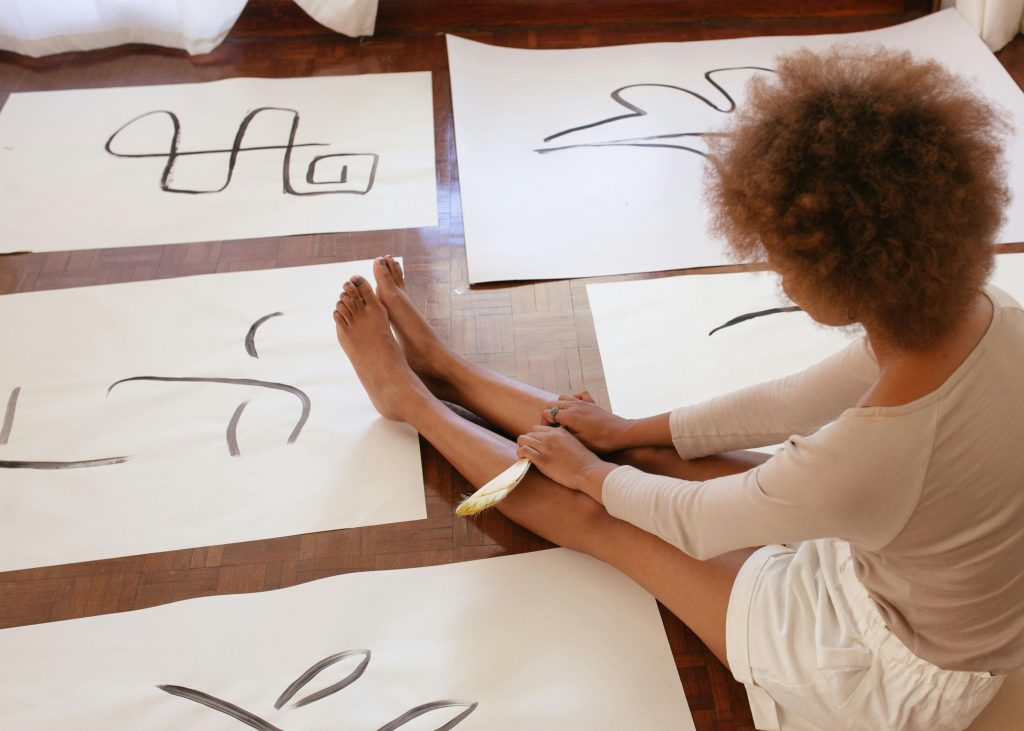
More Tips for a Chill Drawing Session
Having explored techniques to calm anxiety in the moment, let’s now consider additional strategies to cultivate a consistently chill and enjoyable drawing session. These tips encompass preparation, technique, and mindset, working together to foster a creative environment where you can thrive.
Warm-Up: Quick Sketches to Get Your Hand Moving
A brief warm-up can help to loosen your muscles, sharpen your focus, and ease you into a state of creative flow. These aren’t meant to be masterpieces; they’re simply a way to prepare your mind and body for the task ahead.
- Take a minimum of minutes to do an activity and just make a ‘whatever’ piece of art that you couldn’t care less about.
- Use these moments of self-reflection as an opportunity to better yourself and your understanding of who you are in a creative space.
- As Drawism Art suggests, think of this exercise as if you’re dumping/taking out all the garbage (mistakes, un-coordination, so-so designs) that could potentially hinder the quality and creativity of your projects.
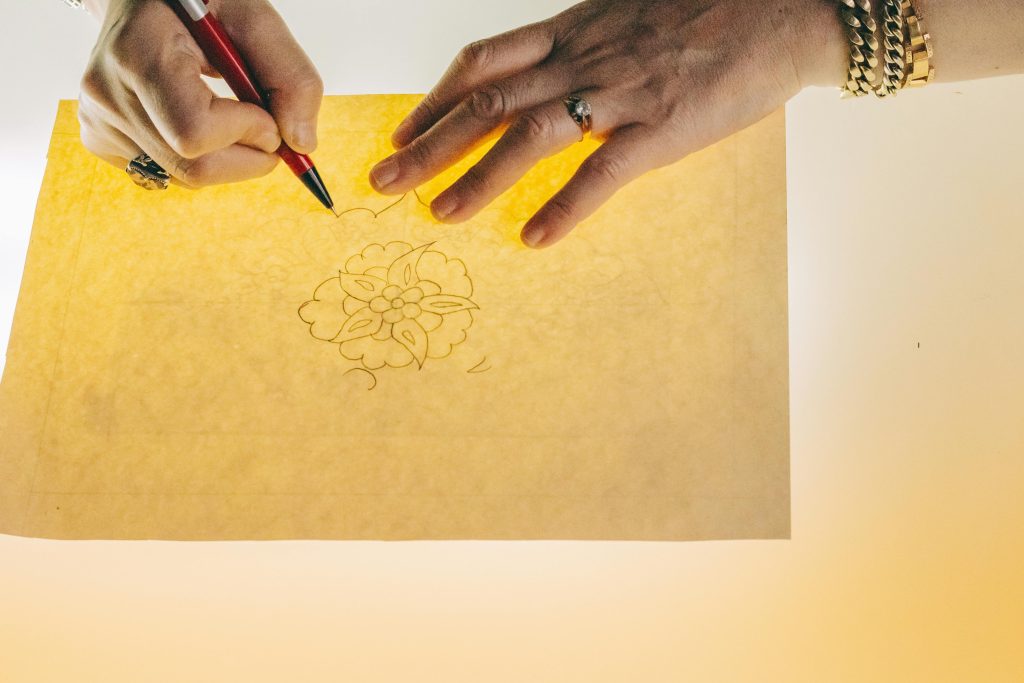
Tracing: Using Tracing to Understand the Human Form
Tracing can be a valuable tool for learning the fundamentals of anatomy and proportion. By carefully tracing over images of the human form, you can develop a better understanding of its underlying structure and how the different parts relate to one another.
- Take a photo and trace over it but trace the shapes you can see that make up the human body and face.
- Sooner or later you will see a pattern happening with similar shapes and you could use this knowledge to draw them just by looking at a human.
- As someone in the r/ArtistLounge says, every artist has their own way of learning so someone else’s mashup of shapes might not work for someone else so oftentimes one set of
- tips and tricks might not be enough.
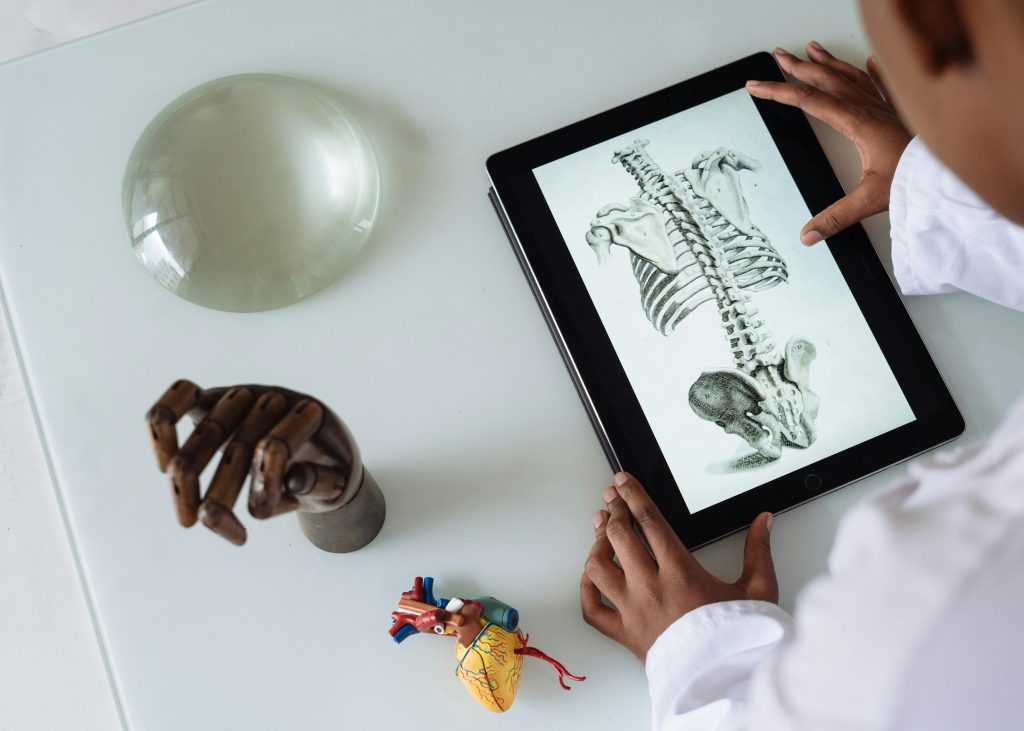
Anatomy: Improving Understanding of the Human Body
A solid understanding of anatomy is essential for drawing realistic and believable figures. While it may seem daunting, breaking down the human body into simpler forms and studying individual parts can make the process more manageable. Simplifying your subject into a series of shapes is a useful technique on how to overcome anxiety about drawing humans.
- Learn the theory by watching YouTube videos, Skillshare courses or attending figure drawing classes in your area.
- Draw hands, feet, etcetera.
- There are many principles in drawing humans like gesture, perspective, facial expression and anatomy. They take a lot of time to master. It is ok to fail. Don’t stress yourself. Even if it fails, you will learn something in the process.
- As someone from r/ArtistLounge states, instead of trying to tackle this anxiety head on and hype yourself up about anatomy with positive feelings, you can just try to emotionally disconnect from learning figures.
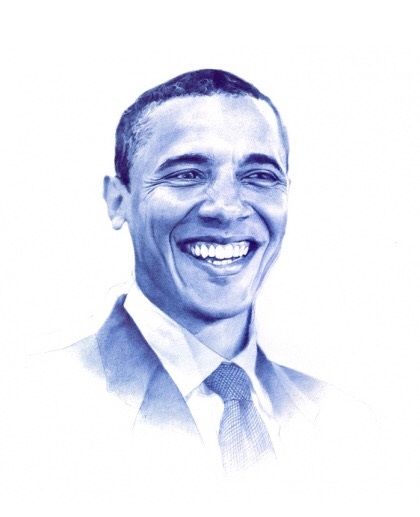
Drawing in Ink: Letting Go of Perfectionism and Learning Flexibility
Drawing directly in ink can be a liberating experience. Without the option of erasing, you’re forced to embrace imperfections and develop a more fluid and adaptable approach.
- Draw directly with a pen directly in ink without any pencil to guide you at all.
- I can assure you that after years of pen & ink drawing, it has greatly improved my drawing ability. Just take a look at my Obama drawing above. In the process, I’ve learned all the tricks to minimize mistakes while using this medium. Most importantly, I learned that my mistakes often compliment my drawings in pen & ink. Above all, these mediums force the artist to discover a new sense of confidence in drawing which is very liberating.
- As Stephen Travers Art says, part of the fear of failure may come from a perfectionist mindset that the drawing has to be perfect. This is great advice by someone who has learned how to overcome anxiety about drawing humans.
Being Prepared: Gathering Materials Beforehand
Procrastination is often fueled by the friction of getting started. By gathering your materials beforehand, you can remove this barrier and make it easier to dive into your drawing session.
As Stephen Travers Art says, fear of failure in what we draw is always worse before we actually start to draw.
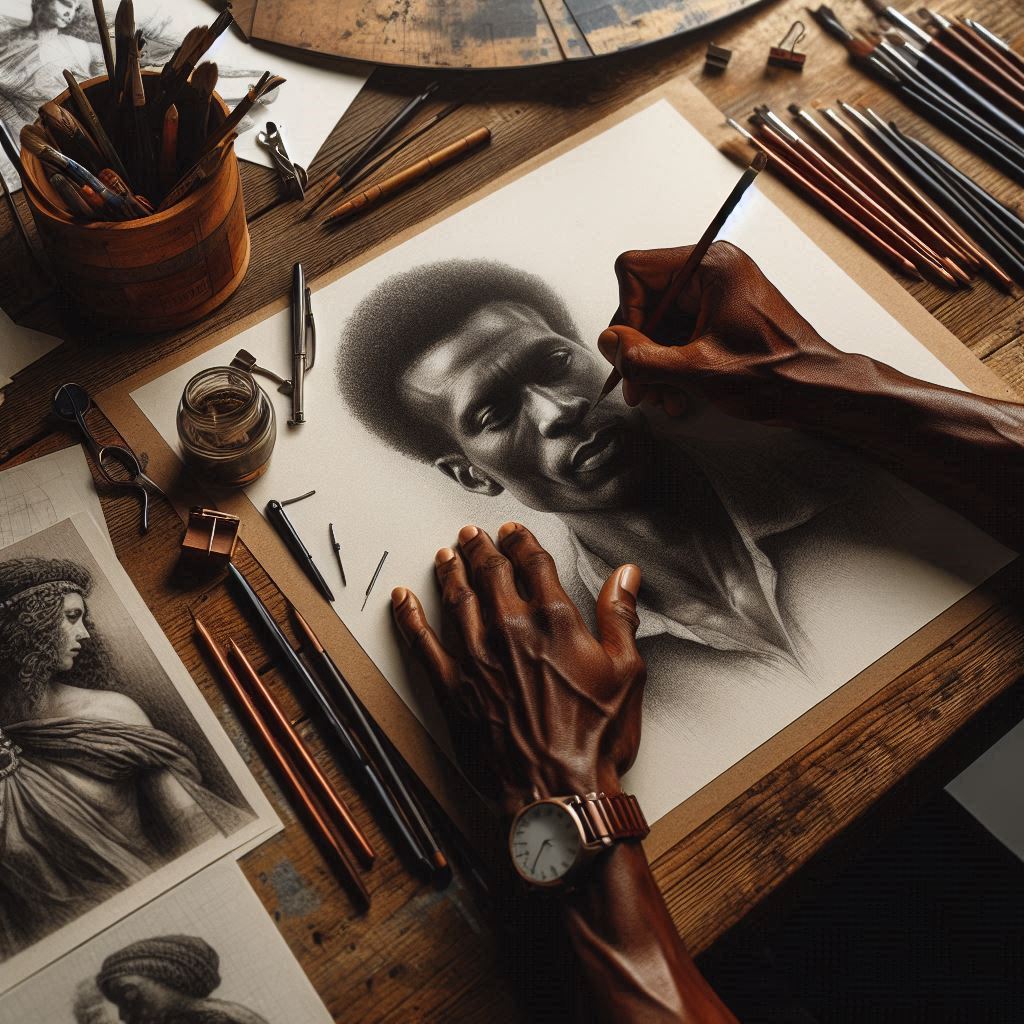
Conclusion: Drawing Humans Can Be a Joy
Having explored a range of strategies and techniques, let’s reiterate the core message: Overcoming drawing anxiety and rediscovering the joy of creating art is entirely possible. It requires patience, self-compassion, and a willingness to experiment, but the rewards are well worth the effort.
- Art anxiety won’t last forever, according to Drawism Art; know that you will get better the more time you spend on your projects.
- Life just became twice as way more enjoyable without this cloud of anxiety over me all the time, says Love Life Drawing.
- As someone from r/ArtistLounge notes, you just gotta grit your teeth and get the bad drawings out; no value judgements about your work, only good things and things you need to improve.
Encourage Readers to Embrace the Artistic Journey
The path to artistic mastery is rarely linear. There will be ups and downs, moments of inspiration and periods of frustration. The key is to embrace the journey, learn from your mistakes, and celebrate your progress along the way.
- We cannot change the way we draw, at least not overnight (we can do it with dedication and training, tenacity in studying and deepening techniques); but we can change our mental attitude towards drawing: by relieving tension with small tricks, we can enjoy this relaxing and meditative activity more.
- Remember that everyone starts as an amateur; don’t feel lousy when you find your drawing sucks.
- As Malin Rozon from The Startup says, if you keep finishing art, then you will steadily build a collection of completed pieces; it is much, much easier to feel like an artist or a creative, and to stay motivated, if you have a collection of work under your belt — even if it’s not perfect.
Remind Them That Art Is About Expression, Not Just Skill
Ultimately, art is about expressing yourself, your ideas, and your emotions. It’s a form of communication, a way to connect with others, and a means of exploring the world around you. Don’t get bogged down in the pursuit of technical perfection; instead, focus on creating art that is meaningful to you.
- Art is not about commerce and critics; it’s about communication, says Sketchbook Skool; sharing whatever it is we know, even if imperfectly, so that our time on earth, our slings and arrows, might not be in vain.
- Methods for being creative are not a one-size fits all but rather an individual identity of how we express our artistic sides, as Drawism.com notes.
- As Love Life Drawing says, embrace uncertainty, believe in your own visual sense, and most of all believe in the power of consistent practice.
So, venture forth with newfound confidence, armed with practical techniques and a fortified mindset. The canvas awaits your unique vision once you learn how to overcome anxiety about drawing humans.
F.A.Q 1: Reducing Anxiety & Choosing A Subject
Here is a list of frequently asked questions and answers about how to overcome anxiety about drawing humans, based on the sources:
- Why do I feel anxious when drawing humans?
- Anxiety often stems from low self-esteem, comparing yourself to other artists, and a lack of confidence. It can also be caused by the pressure to create perfect drawings and fear of failure.
- How can I reduce anxiety before starting a drawing session?
- Prepare your materials beforehand to avoid procrastination fueled by the friction of getting started.
- Practice calming down and having more realistic expectations for your drawings, removing the pressure to make each one flawless.
- Meditate for one minute before you start drawing, or put on a comedy album or podcast .
- How do I choose a subject to draw?
- Choose a subject that’s not too ambitious for your skill level and experience.
- Select a subject within a niche that interests you to focus your drawing challenges and improve self-confidence.
F.A.Q. 2: Mindset, Technique & Anatomy
- What mindset should I adopt to reduce anxiety while drawing?
- Focus on the process, not the result, and enjoy the act of creating.
- Accept that you won’t make a perfect piece every time, and failing is part of learning.
- Remember that art is about expression, not just skill, and focus on creating art that is meaningful to you.
- Adopt the mantra “If it works, it’s good”.
- What techniques can help me draw more freely?
- Warm-up with quick sketches to loosen muscles and sharpen focus.
- Draw directly in ink to embrace imperfections and develop a more adaptable approach.
- Try timed gesture studies to capture the feeling of a pose quickly.
- Do blind contour drawing or variations of it.
- Do drawings where you purposely make it ‘wrong’ or ‘ugly’.
- How can I improve my understanding of human anatomy?
- Use tracing to understand the human form and develop a better understanding of its underlying structure.
- Study anatomy by watching videos and drawing specific body parts like hands and feet.
- Consider taking a figure drawing class at a local community college or art center.
F.A.Q. 3: Overcoming Your Fears
- How should I handle negative self-talk?
- Challenge the “what if” questions by recognizing they are doubts, not real problems.
- Divorce your feelings about your work from objective truth, accepting that you’ll be bad for a while
- Focus on identifying weaknesses and working to improve them, rather than making value judgments about your work.
- What if I’m afraid of drawing in public?
- Start small by practicing in less crowded, quieter places.
- Use small sketchbooks that feel less intimidating.
- If you feel self-conscious about it, learn to sketch incognito.
- How do I stay motivated?
- Create things you enjoy in order to feel more energized and motivated.
- Acknowledge that some things aren’t going the way you want in your creative endeavors.
- As Malin Rozon from The Startup says, if you keep finishing art, then you will steadily build a collection of completed pieces; it is much, much easier to feel like an artist or a creative, and to stay motivated, if you have a collection of work under your belt — even if it’s not perfect.
